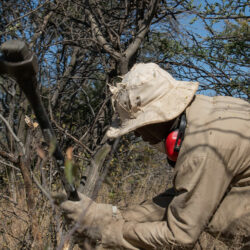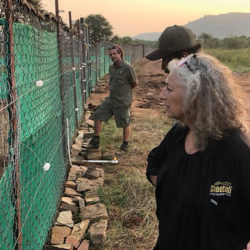My Snake Experience at CCF was an Experience of a Lifetime
-

- by Modesta Fabianus March 17, 2022
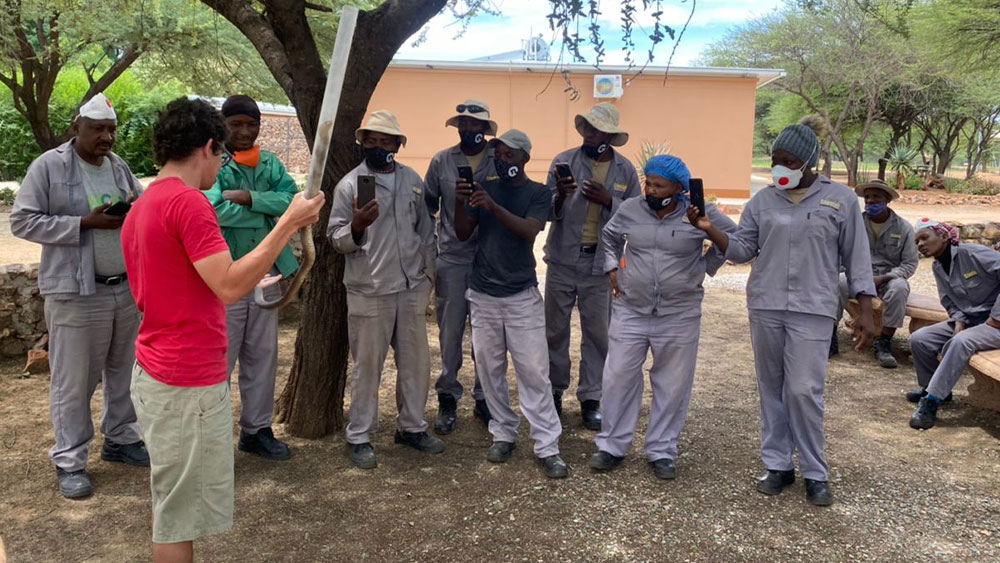
It was on the 7th of March 2022 when Francois, a snake expert, visited the CCF centre with the aim of giving a snake awareness course to the on-site CCF staffs and interns. The main aim of the course was to give a brief understanding of snakes behaviors and how we should deal with them when encountered. The course was so interesting and we were very fortunate to have a look at some of the different snake species that he brought, which he also invited us to feel their skins.
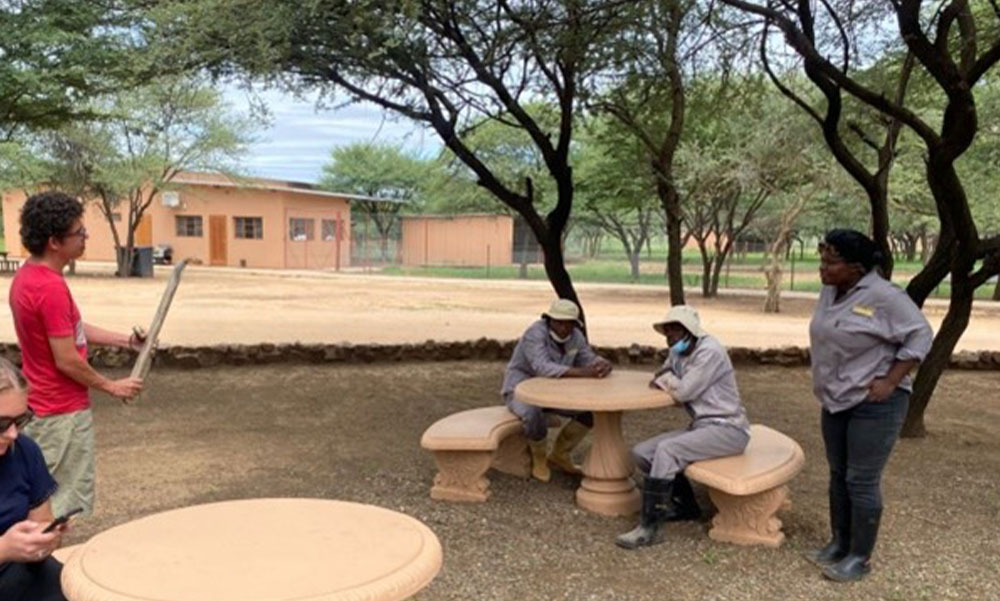

The first snake he showed us was a puff adder. This species is wide and shorter in length with a pattern of brown, white, and black colours. This species can use its tongue and tail to attract its prey and can ambush after up to 6 weeks waiting for prey. He further said that it can strike up to the distance of their body length. Francois shared with us that puff adders are the cause of the most bites in Namibia each year. Thankfully, very few puff adder bites are fatal with medical treatment.
The second snake Francois showed us was a type of spitting cobra known as a zebra snake. It is named after the zebra because of its striped black and white patterned scales. It has an average length of 1.2 to 1.5 meter long and can spit up to a distance of 2 meters as a defensive mechanism to blind the eyes of an animal threatening it. Francois also mentioned that after the puff adder, zebra snakes are the most common cause of bites on people in Namibia. There are reported cases of the snake trying to swallow people’s fingers while they are asleep. An experimental study was done to determine why the species does this, and it was shown that the species is attracted to people’s sweat. Unfortunately, there is no anti-venom to treat a zebra snake bite. Fortunately, it is very possible to survive a zebra snake bite if medical treatment is received soon after the bite.
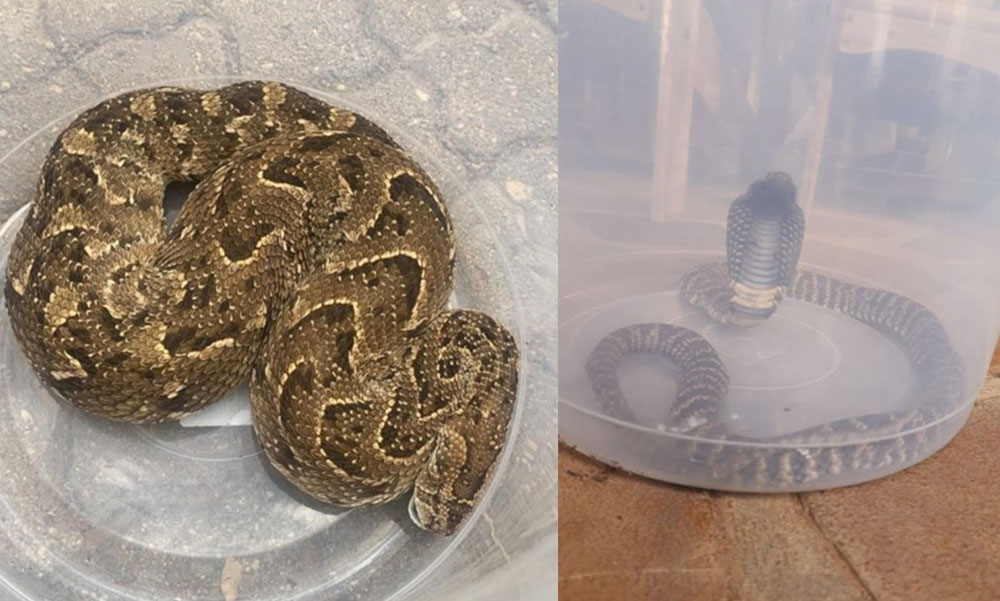
When Francois removed the zebra snake from the tube, I was terrified up to the point where I almost ran away. Despite my fear, I am proud to say that I was the first one to touch the snake and it was my first time in my entire life to touch a cobra snake. I discovered that it has a very soft skin although it is covered with scales. This was a bit scary but very interesting.

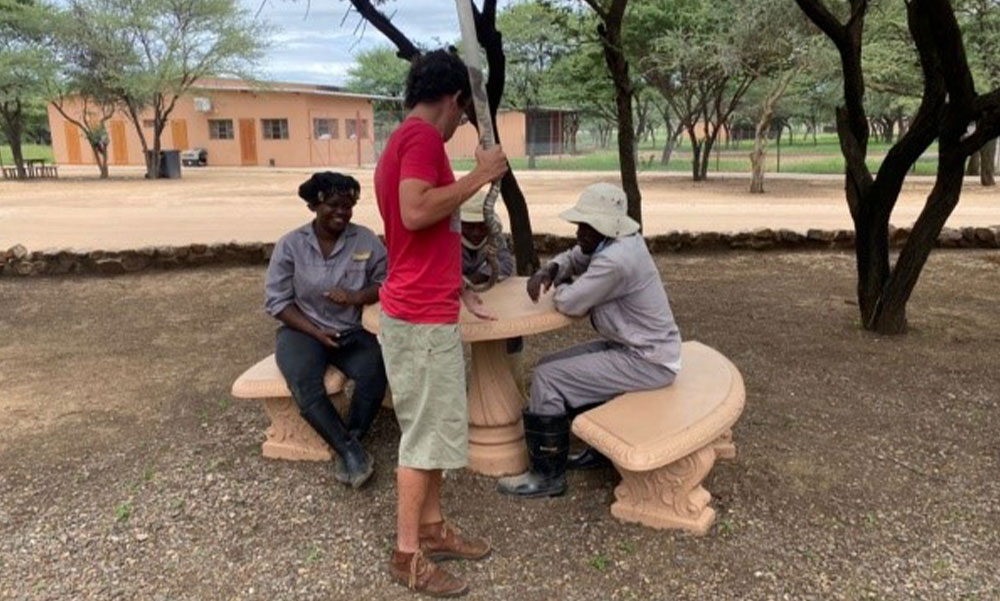
Angolan cobra, also known as Anchieta’s cobra, is another venomous species and was the longest snake among all three that Francois brought to show us. It was black and shiny with a hood around its head. Although this species can grow up to 2.4 meters, the one that Francois showed us was thinner than the other two snakes that we saw during the course.
During the course, we also learned some techniques to avoid being bitten by snakes and what to do if we do get bitten. We learned to always wear long trousers when working in the bush. The trousers should be loose to act as another layer of protection against snakes. It is also best to wear proper foot coverings like boots. If possible, wearing sunglasses or eye protection is a good idea to protect against snakes that may spit venom. I learned new things that I didn’t know before, for example, if someone is bitten, they should not lay on their back, but on their left side. It is also not a good idea to tie the part of the body where the snake bite is. This can cause something called venom rush where the venom rush through the body when the tie is removed.
Before attending this course, I was afraid of snakes and I hated them. In my position at CCF, I work outside and have always been afraid of encountering a snake. Now after this snake awareness course, I have a new respect for snakes. I feel like I will know what to do if I see a snake and how to help care for someone if they are bitten by a snake.

The funding for this training was kindly provided by Serengeti Park and Aktionsgemeinschaft Artenschutz (AGA) e.V., CCF’s partner organization in Germany.
Related Reading
-
January 20, 2025
Remembering Abdirizak -
April 3, 2023
Clearing the Land for Cheetahs -
October 4, 2022
Veterinary Work at CCF Needs Your Support


